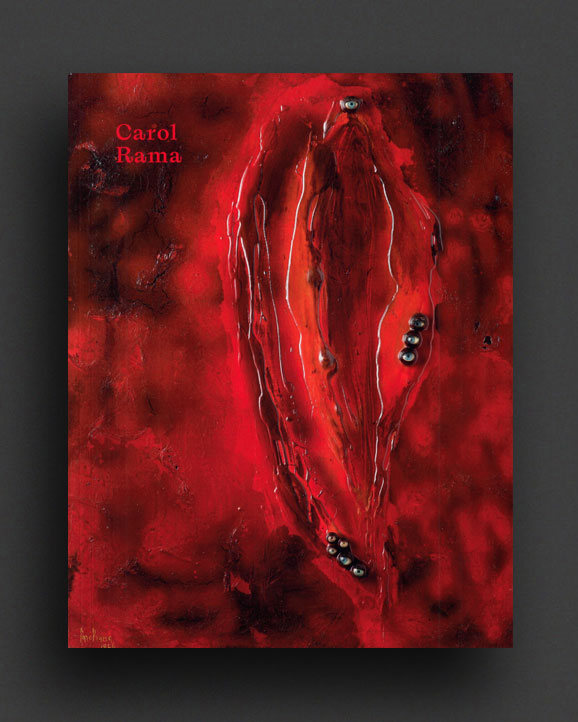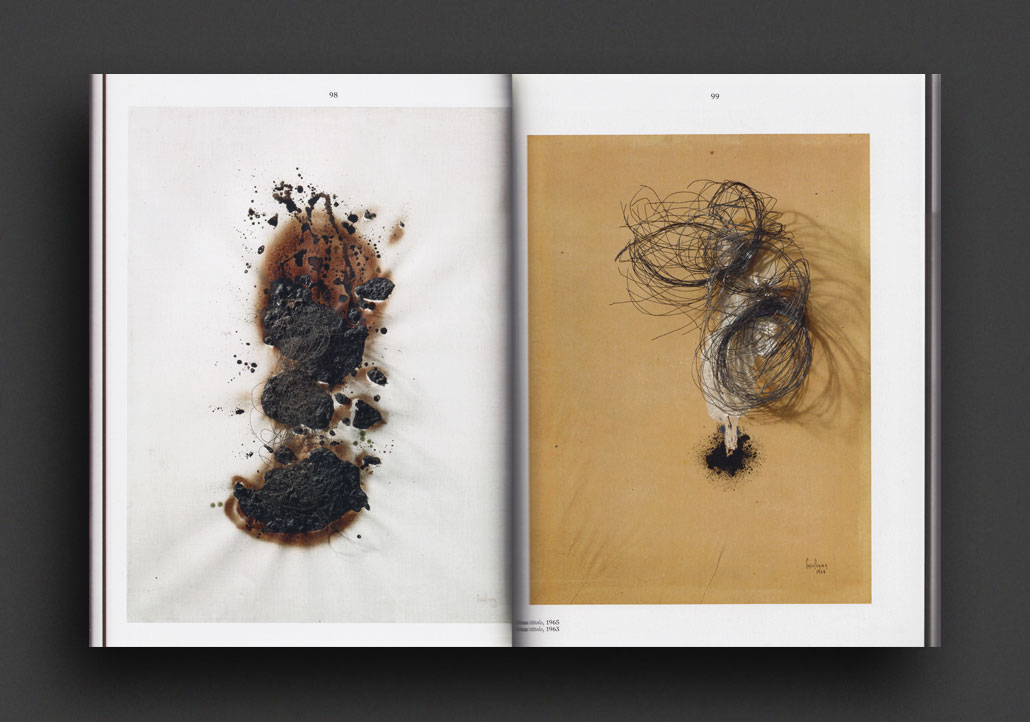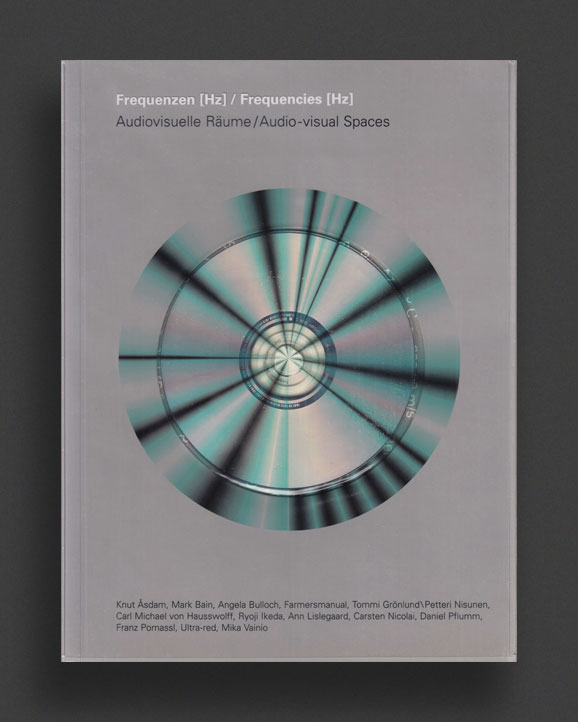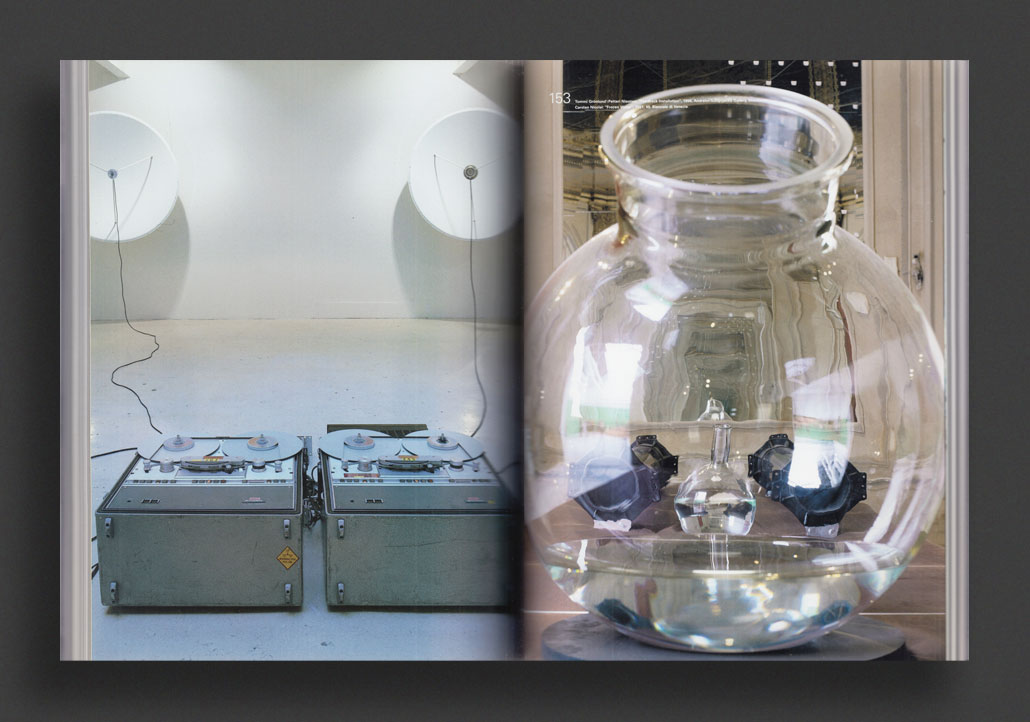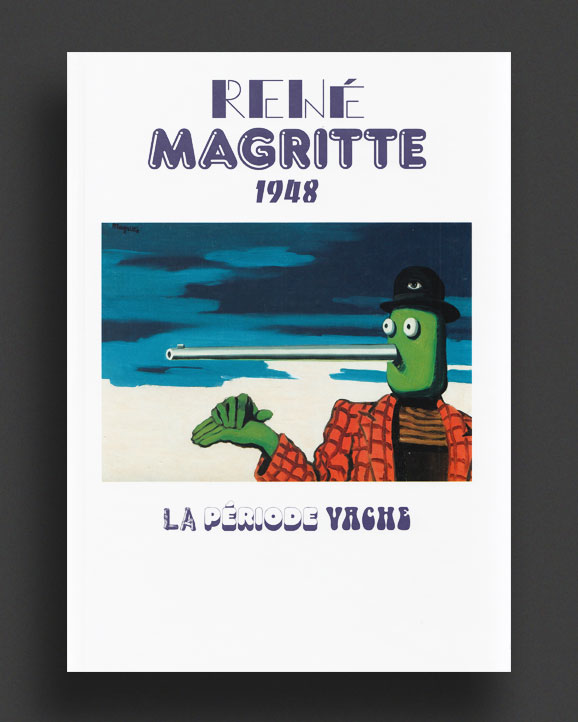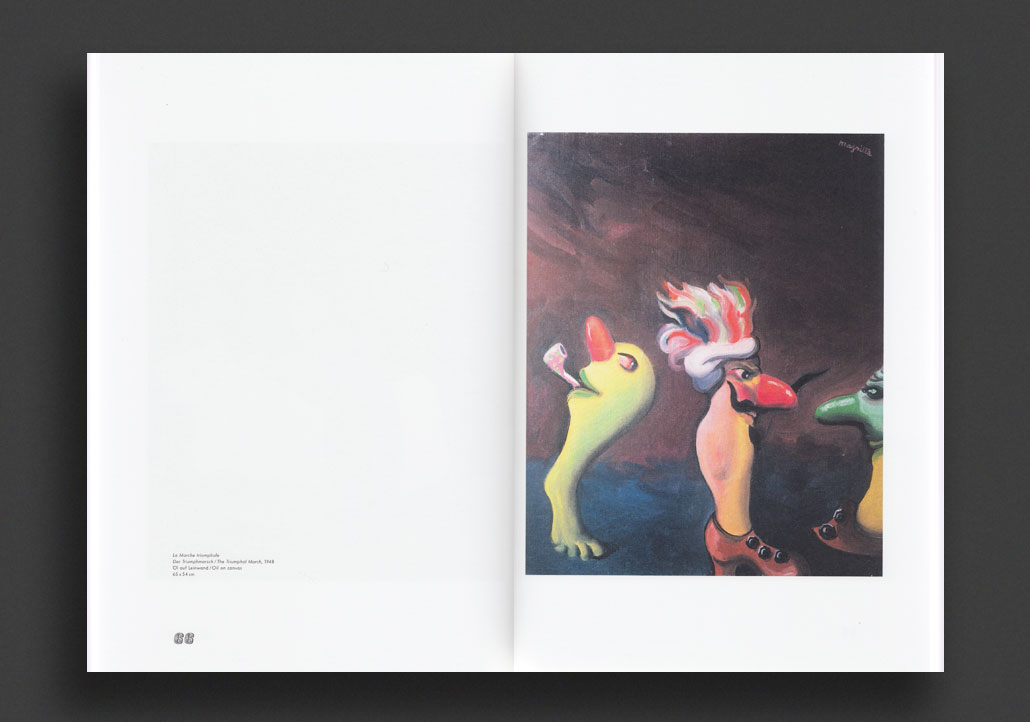(...less)
Now out-of-print and collectible, this wonderful hardcover monograph is entirely dedicated to the exceptional, radical and nearly unknown period of paintings from famed Belgian Surrealist painter René Magritte known as the Période Vache, from 1948.
René Magritte numbers not only among the most important, but also among the most popular twentieth-century artists. Often against the grain of the artistic tendencies of his time, the Belgian Surrealist painter developed a unique and unmistakable pictorial language. His work’s continuing crucial influence on later generations of artists and his impact on today’s visual culture are almost without par. Many of his enigmatic and equally hard-to-forget solutions have been reproduced in the millions and become famous icons far beyond the world of art.
However, a fascinating period of the artist’s landmark oeuvre has remained nearly unknown: his so-called Période vache. In 1948, Magritte made a group of paintings and gouaches distinctly different from the rest of his work for his first solo exhibition in Paris. Relying on a new, fast and aggressive style of painting – and particularly inspired by popular sources such as caricatures and comics, but also interspersing his works with stylistic quotations from artists like James Ensor or Henri Matisse – Magritte, within only a few weeks, produced about thirty entirely uncharacteristic works that caused an outrage in Paris. The artist deliberately conceived the exhibition as a provocation of and an assault on the Parisian public. Painting in an unexpectedly crude, playful, and intentionally “bad” manner, he reflected his own work and painting in general.
The fact that Magritte’s first solo presentation in Paris did not take place before 1948 is of crucial relevance for the genesis of his Période vache. Paris was not only the center of the art world, but also the capital of the Surrealist movement, and Magritte, as the central figure of Belgian Surrealism, had been in close contact with the circle around André Breton since the 1920s. Yet, it was not only his attempt to establish himself in the French metropolis that failed after only a three-year stay (1927–1930); even after his international recognition had grown in the 1930s, he was denied an adequate appreciation of his work in Paris. In addition, Magritte came into direct conflict with Paris after the war when his redefinition of Surrealism met with the disapproval of the Surrealist group’s protagonists returning home from exile.
This was the context in which Magritte regarded his invitation to Paris in 1948 less as an overdue chance of success in the French metropolis but rather as an opportunity for taking revenge – for the arrogance of the capital’s art scene and the ossified attitude of a Surrealism that had outlived itself and become far too socially acceptable – by pulling off a surprising coup.
The term “vache” used by Magritte for his new group of works is mostly understood as an ironical allusion to the historical movement of the Fauves, whose exaggerated coloring Magritte’s works parodied as much as their decoratively pleasing character. Yet in French, “vache” does not only mean “cow,” but also as much as “mean” or “nasty”; “vacherie” signifies a mean trick. Thus, the term hints at the aggressive and deliberately crude quality characteristic of the pictures.
The exhibition in Paris turned out the expected failure. Not one picture was sold. The press reacted frostily. The public was appalled. The Paris Surrealists kept their distance. Only one of the vache works was exhibited again during Magritte’s lifetime, i.e. until 1967. For exhibition makers as well as art dealers and art historians, this group of works constituted an alien element in an otherwise extraordinarily consistent oeuvre. In addition, it did not fit in with the image of an artist who had, above all, been presented as a pioneer of Pop art and Concept art since the 1960s. It was not before thirty years after their making that these hitherto forgotten works began to be gradually reevaluated and appreciated starting with the “Westkunst” exhibition in Cologne. In the context of the 1980s’ Post-Conceptual painting, the strategies Magritte had relied on for subverting the prevailing standards of painting in the medium itself appeared both exemplary and highly topical. Today, about forty years after Magritte’s death, contemporary artists such as John Currin or Sean Landers often come to understand his oeuvre by making themselves familiar with the works of his Période vache at first. The works’ humor, spontaneous style, and daring bad taste provide an example for a form of painting deriving its momentum from the apparent meaningless of its subjects in order to refute the clichés of today’s world of images. With his manifesto-like protest against all varieties of arrogance and reprimands in the arts, Magritte has become a model for the artist’s triumph over the workings of an art scene that seem to be more overpowering today than they ever were.
Edited by Esther Schlicht and Max Hollein. With a preface by Max Hollein and texts by Michel Draguet, Robert Fleck, Florence Hespel, and Esther Schlicht.
Very Good copy, with knock to top of back boards (not effecting contents)
File under:
René Magritte
Esther Schlicht
Florence Hespel
Max Hollein
Michel Draguet
Robert Fleck
Schirn Kunsthalle / Frankfurt
Art
Out-of-print / Rare
Painting
Surrealism




















































































































































